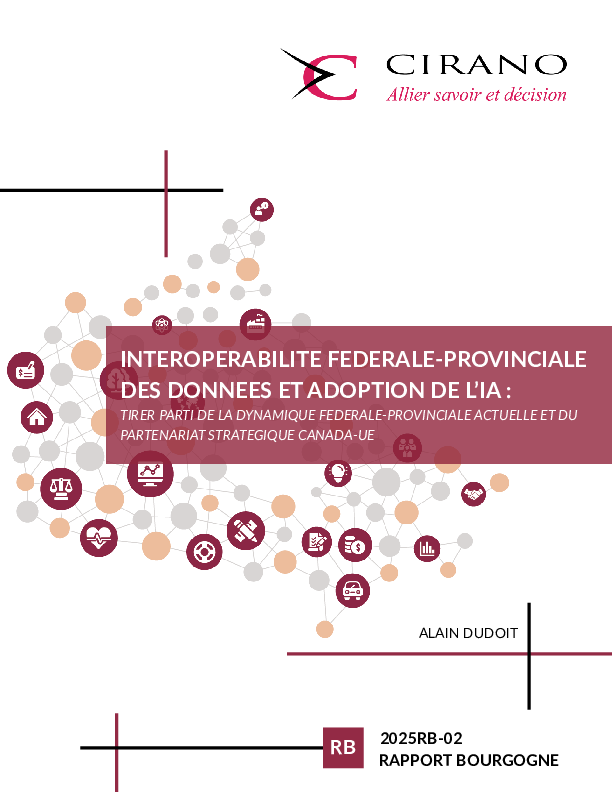Obstacles et incitatifs à l’adoption des technologies innovantes dans le secteur minier québécois
The aim of this research report is to identify and better understand the barriers and incentives to the adoption of innovative technologies in the Quebec mining sector in the operational phase, while examining the potential impact of ESG (environmental, social and governance) criteria on this adoption. The initial finding, based on the most recent data published by Statistics Canada (2017-2019 period), highlighted a certain lag in innovation in the Quebec mining sector compared to other industrial sectors, as well as a certain lag in terms of organizational innovations compared to Ontario mining companies. This project aims to update these findings, particularly in view of the economic changes of the past five years. In fact, mining investment in Quebec increased in 2022 compared to the previous five years.
The first part of the project is based on an in-depth review of the literature on mining innovation and sustainable finance, establishing a solid knowledge base. The second part of the project aims to update the findings of the literature and to validate, invalidate or qualify them by applying them specifically to the Quebec context. This phase involved interviews with 30 key industry players, complemented by over 50 informal meetings at industry events.
Innovation in the mining sector is seen as a key driver of competitive advantage, generating cost savings, improved efficiency and productivity, while offering more difficult-to-quantify benefits such as reduced health & safety, environmental and reputational risks. However, the adoption of innovations in the mining sector is influenced by three categories of factors:
- the sector's inherent economic characteristics, particularly the capital intensity and cyclical nature of the mining industry;
- the sector's complex organizational context, focused on risk management and marked by loss aversion;
- the sector's specific ecosystem in Quebec, characterized by stakeholders with sometimes divergent interests, which sometimes makes data governance complex, especially as the industry's digital transformation intensifies.
The rise of ESG criteria in the mining sector is creating new challenges. The growing demand for transparency on the part of investors can have an impact on companies, particularly mining companies, where maintaining the social license to operate remains crucial. Beyond GHG emissions, greater transparency regarding social and environmental impacts is becoming essential. Although there is currently no consensus on the link between ESG and financial performance, poor ESG practices are perceived as detrimental. Accurate monitoring of ESG data and transparency based on common standards will be useful in anticipating future regulations.
In conclusion, it is essential to direct investments towards sustainable technologies, promote collaboration with all industry stakeholders and prepare for increased transparency on ESG criteria, harmonized on an industry scale.




